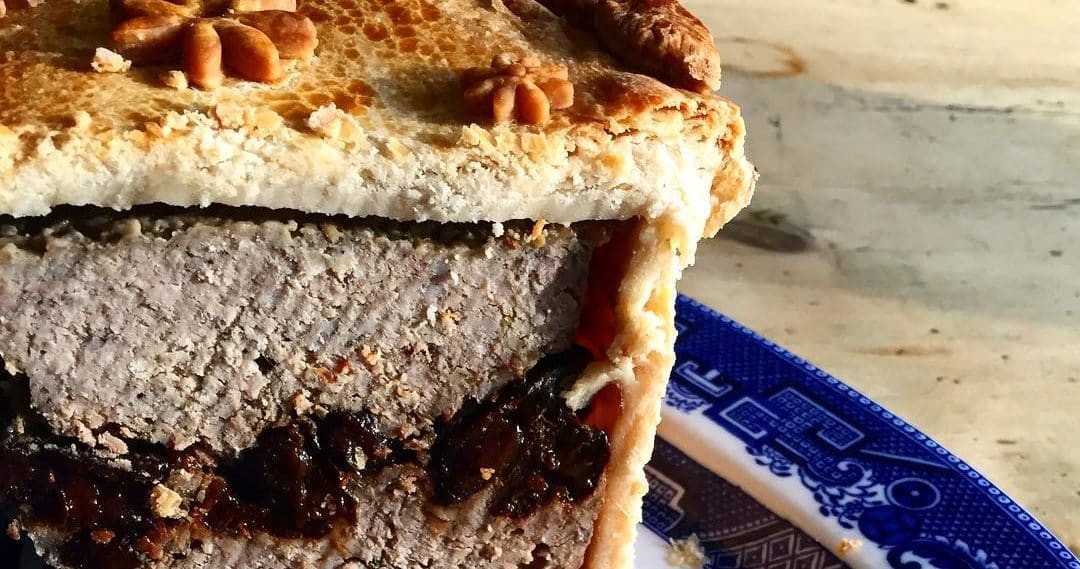An ivory, white, or blush-pink wedding cake is one of the most recognizable dessert items of the modern era. They’re usually specked with expertly-crafted fondant flowers or frosted with ribbons of white buttercream. And depending on the couple, a funny cake topper is a must. Needless to say, we’ve come a long way since the wedding cake’s birth.
In fact, during the Medieval period, wedding cakes weren’t wedding cakes at all.
Rather than wowing guests with tiers upon tiers of cake, Medieval couples served spiced buns, scones, and sometimes, cookies. Early Britons adopted the tradition of serving baked goods at weddings from the Romans, who invaded and conquered Britain in 43 AD. Romans were seemingly the first society to serve cakes, made of wheat and barley, at their wedding celebrations.
Go Romans!
Cake was actually a symbol.
The cake itself was more of a symbol than a dessert item — the groom would join guests in breaking the bread over the bride’s head in order to promote luck and fertility. The bride and groom would then eat a few crumbs together (an act called confarreatio), and the guests would gather up the remaining crumbs to keep as good luck charms.
What an interesting good luck charm.
The tradition changed over time, and over country lines.
The Roman wedding cake tradition bled into Britain, which is where it was altered into something similar, but also completely different. You’ll see what we mean. In Medieval England — which spanned from the 5th to the 15th century — the Roman wedding cake morphed into a tower of spiced buns. These sweet buns, called wiggs, were piled as tall as possible into a tower.
The bride and groom were then challenged to kiss over the tower of buns. If they could do so without the tower toppling, the were destined to live a life of prosperity.
That must have sucked if a gust of wind came along…
Romans weren’t the only ones doing this, though.
Sometimes, similar to guests of Roman weddings, unmarried guests of Medieval English weddings would also take home bits of pastry from the celebration. They would put these pastry crumbs under their pillows to bring luck into their lives. This is much different from carrying around a horseshoe or rabbit’s foot.
Maybe we should give it a try?

There was a different between the rich and the poor.
Of course, bun towers were only a thing at Medieval weddings if the couple’s families could afford to make such a thing. Having a wood-burning stove in one’s home was a great luxury, and up until the 15th century, sweet dough and exotic spices weren’t readily available to commoners. So if you wanted the tower, you had to have power — *cough cough* money. You needed to have money.
Sadly, cool wedding treats were only for the rich.

“Bride’s Pie” was also something to look forward to at weddings.
Although the bun tower was an especially fun sight to see at posh Medieval weddings, the Bride’s Pie (or “Bride’s Pye,” as it was spelled back in the day) was the real pièce de résistance at every wedding celebration. The earliest recording of a Bride’s Pie is from a 1685 edition of The Accomplisht Cook by Robert May, although it is believed Bride’s Pie was served in the decades before the 17th century.
We’ll stay away from the Bride’s Pie for now, thank you.
The crust was where it was at when it came to Bride’s Pie.
According to May, a Bride’s Pie was usually round and fairly large, and had an outer crust that was finely-decorated, perhaps with floral motifs. Inside, a Bride’s Pie could contain oysters, pine kernels, cockscombs (the literal comb of a rooster), lambstones (ahem… testicles), “sweetbreads,” and spices.
Doesn’t sound that appetizing, tbh.
Bride’s Pie was pretty versatile, depending on what was available (and affordable).
More modest celebrations would serve a Bride’s Pie made with minced meats or mutton. For those of you who aren’t aware, mutton is the meat from a matured sheep. We’re getting flashbacks of Joffrey and Margaery’s pigeon pie from Game of Thrones. It looks like the show’s creators got some real-life inspiration for that one.
Turns out that Game of Thrones is more real than we thought — minus the dragons.

The tradition of serving Bride’s Pie at weddings lasted from the Medieval era to the nineteenth century in some parts of England. The county of Yorkshire created the tradition of placing a ring in the middle of their Bride’s Pies, and whichever lady found the ring was said to be the next to marry — the ye olde version of catching the bouquet.
Though, this does sound like a bit more of a choking hazard than catching the bride’s bouquet.

Pie turns into cake.
By the seventeenth century, the savory Bride’s Pie transitioned into a sweet, fruity cake. Still quite crude-looking, these cakes were first made with shortcrust pastry, currants, and a dash of sugar. And according to The Daily Meal, “Towards the end of the 1700s, it became more common for the ‘bride cake’ to be covered in a white meringue-like icing to symbolize purity.”
We’re glad that tradition has been done away with.
A trend is making a comeback.
It’s true that the modern wedding cake as we know it has evolved quite a bit from its humble beginnings. However, it’s interesting to see the tower trend is making a comeback (about 1,000 years after it was initially started). This donut hole tower is actually pretty spot-on to what our English ancestors dug into during the wedding celebrations of yore.
We’d honestly love to smooch our honey over this pile of donuts from Pinkbox.
There is so much you can do with a dessert tower.
And couples are getting creative with their dessert towers, adding more than just buns, donuts, and other pastries. Those Medieval couples who added scones and cookies into their bun towers would definitely approve. Honestly, this cheese wheel tower looks like it’s straight out of a Medieval celebration.
And we mean that in the best way possible.
We’ll take some traditions, but leave others behind.
So, maybe our Medieval predecessors were onto something. However, we don’t think we’ll be bringing the Bride’s Pie — with all its oysters and lamb testicles — back any time soon. But the tower of sweets? We can definitely jive with that. It honestly reminds us of a croquembouche, a tower of cream puffs that’s often served at French weddings, according to Bon Appétit.
The French know what they’re doing when it comes to wedding pastries.
If you want to get Medieval with your wedding cake, we certainly don’t blame you.
After all, there is plenty of inspiration out there. Perhaps you want to try a modern version of a Bride’s Pie — especially if you prefer pie over cake — adding different fruits and spreads to make the perfect dessert for your wedding guests. Then again, maybe you’d rather go with a pile of sweets guests can pick from. It’s also much easier than cutting an entire cake.
Pie or cake?
Especially if your cake is simply Medieval Times inspired.
(Again, no Bride’s Pie, please!)

